Abstract
1. Single unit and multi-unit recordings of muscle spindle activity were made from the peroneal nerves of human subjects. While the subjects attempted to maintain a constant ankle joint position, an external load on the receptor-bearing muscle was altered unexpectedly. 2. The spindle discharge produced by a sudden increase in load was of similar strength when the receptor-bearing muscle was relaxed as when it was contracting at the moment of the impact. A motor response at a latency consistent with a spinal reflex mechanism occurred only when the muscle was contracting. It is concluded that the potentiation of the reflex mechanism during contraction was not due primarily to a fusimotor action. 3. Sudden decrease in load produced a pause in spindle discharge followed by a pause in on-going e.m.g. activity at a latency consistent with spinal reflex mechanisms. 4. Slow changes in load produced parallel changes in e.m.g. and spindle discharge. It is suggested that the voluntary effort involved in maintaining joint position in the face of gradually changing loads results in corticospinal activity adjusted in strength to the opposing torque and operating on alpha and gamma motoneurones in parallel.
Full text
PDF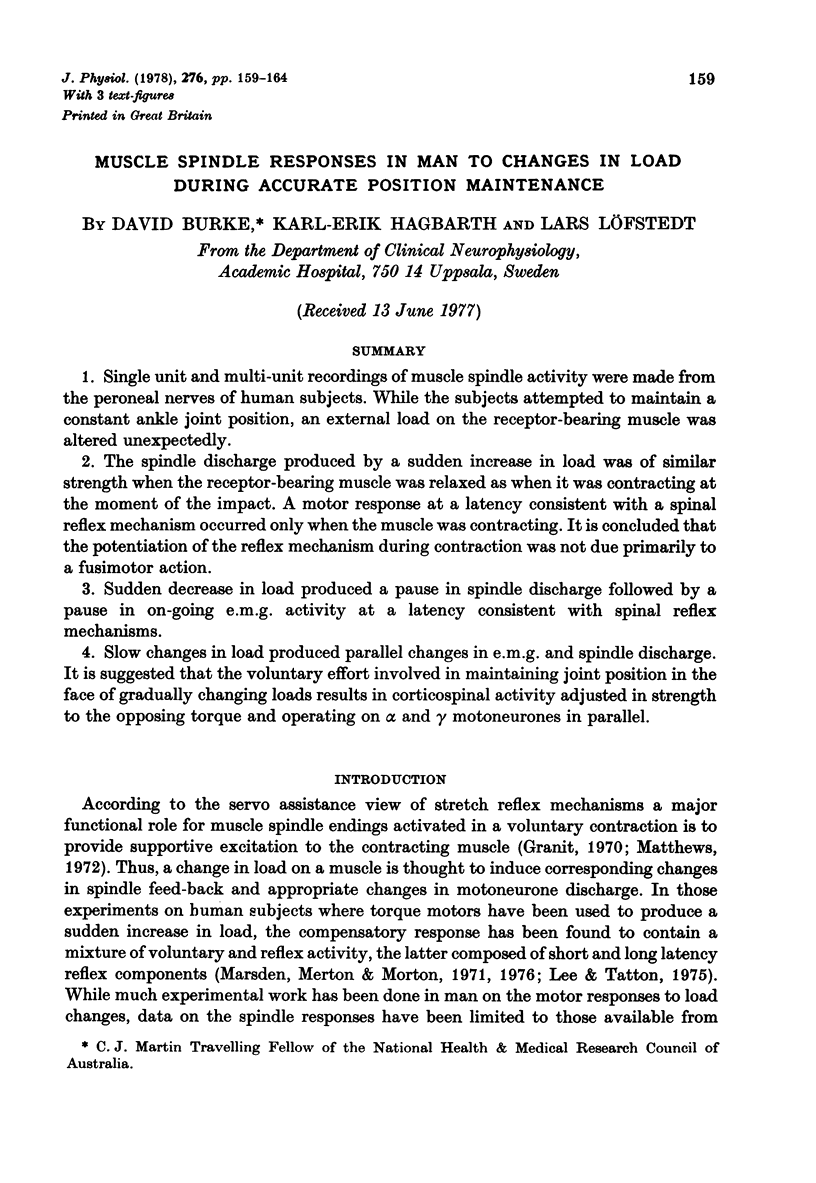
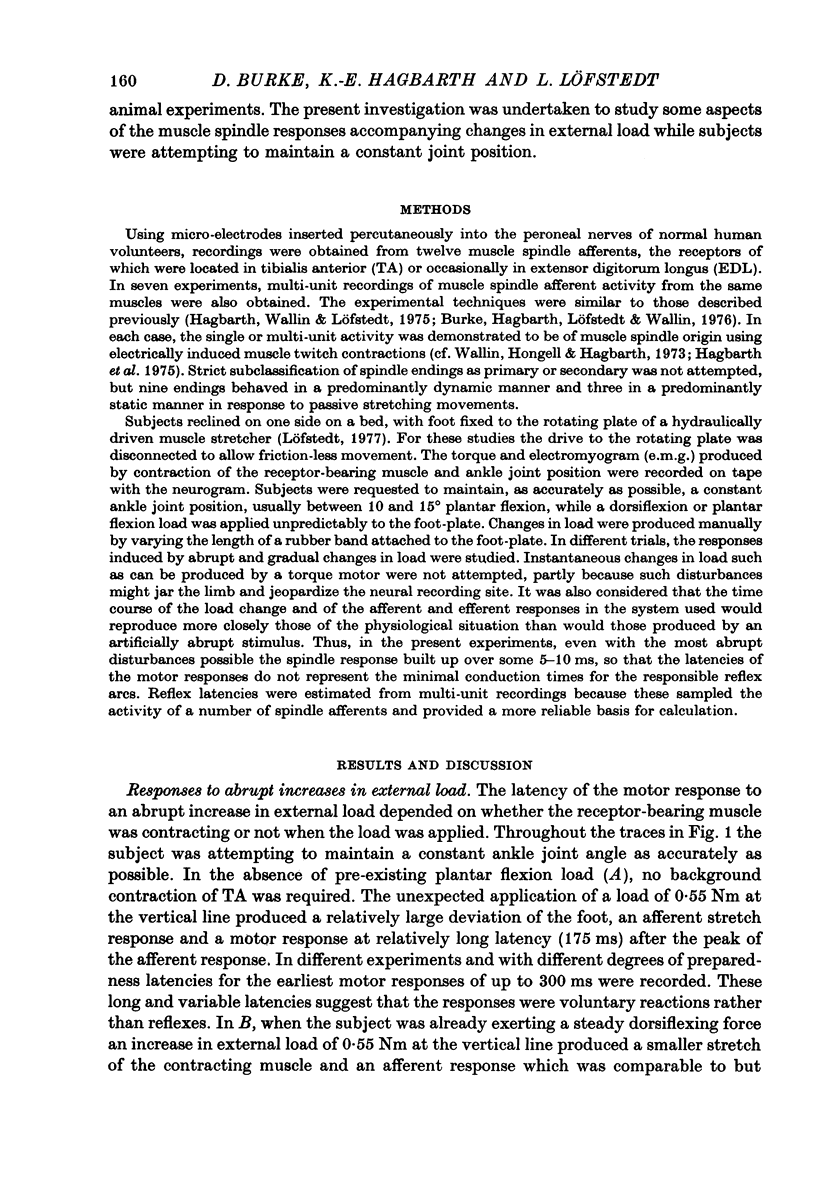
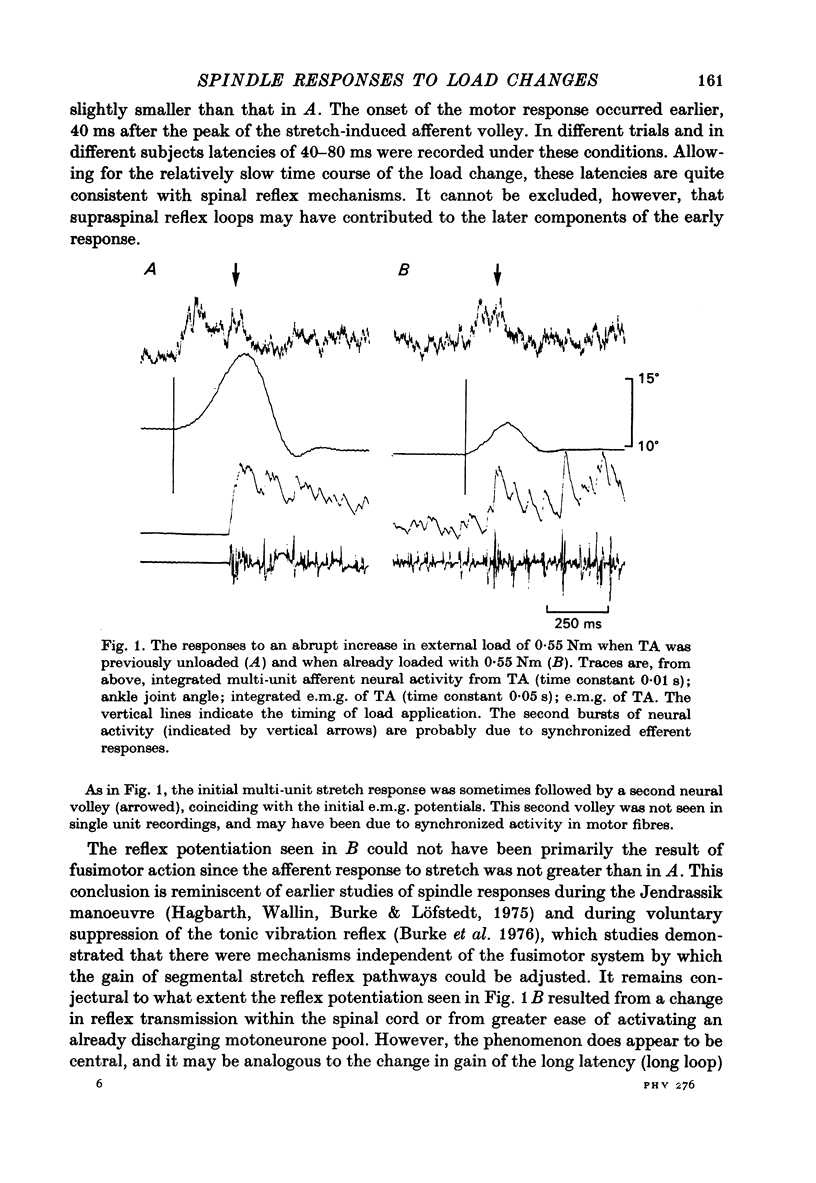
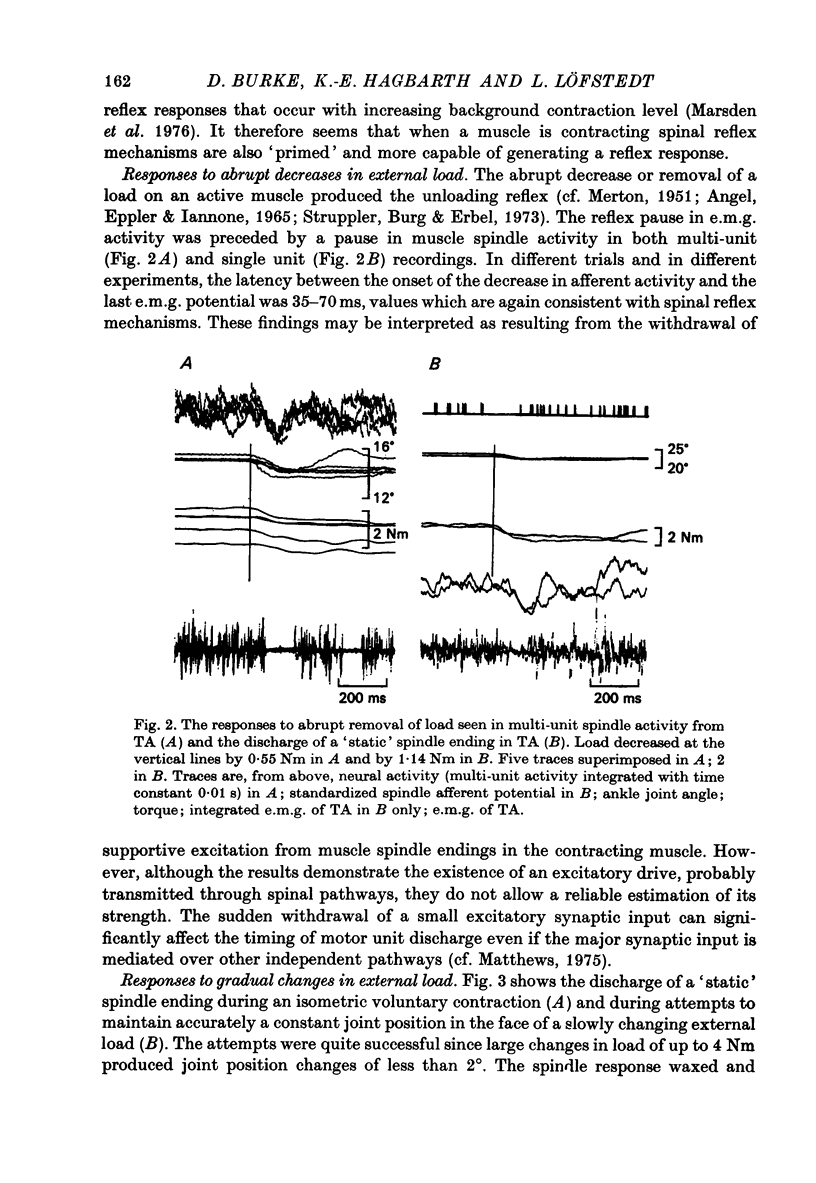
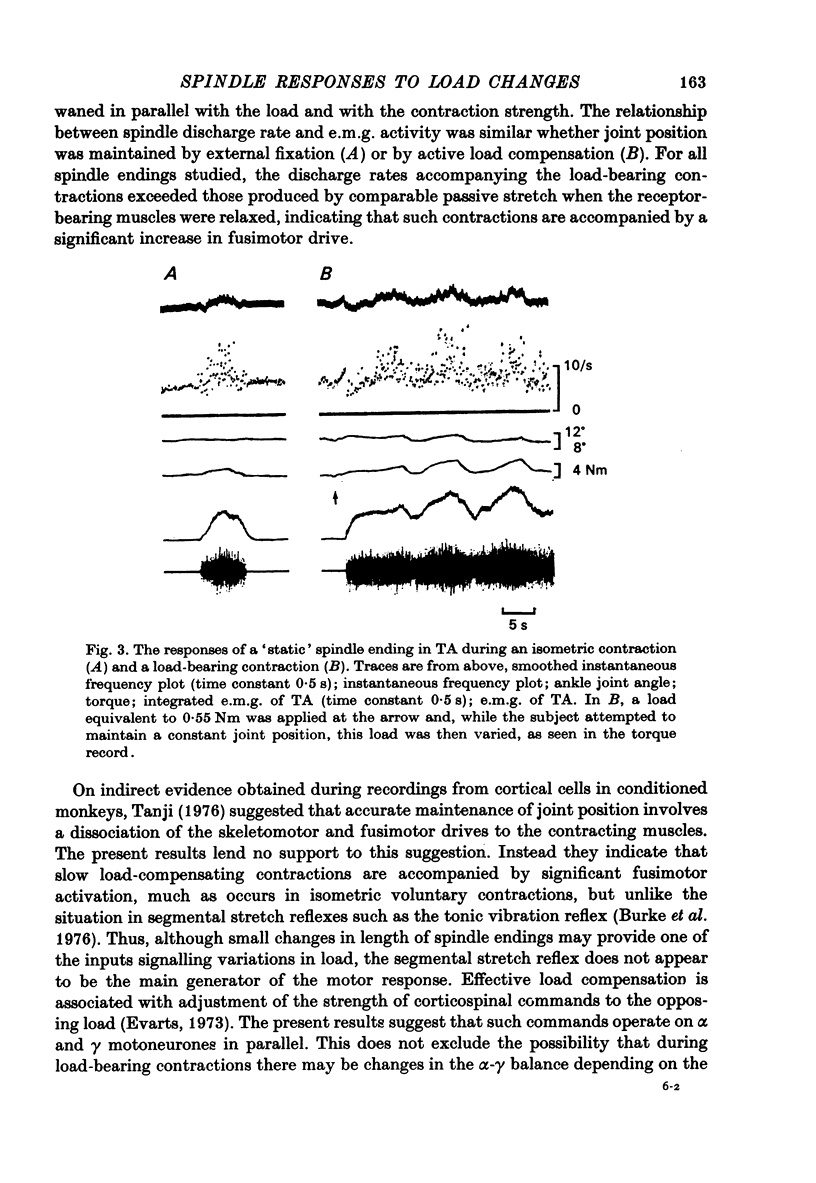
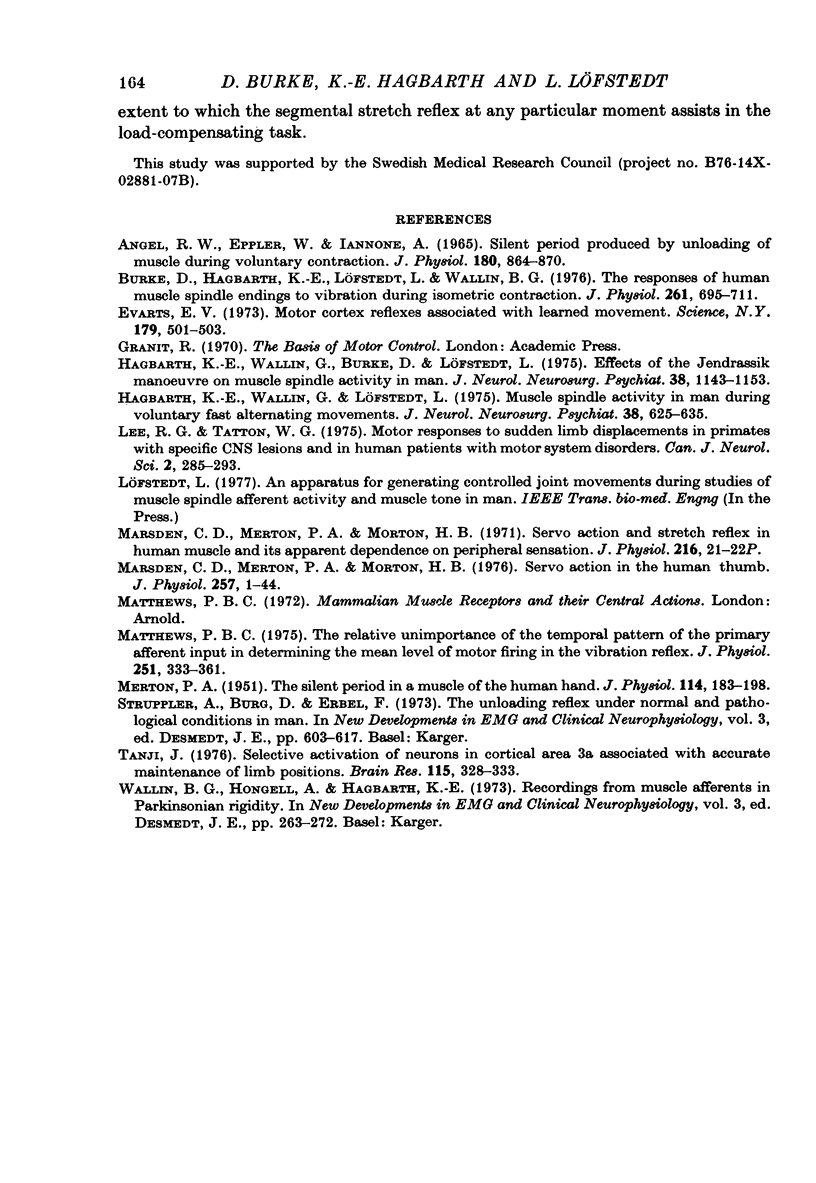
Selected References
These references are in PubMed. This may not be the complete list of references from this article.
- Angel R. W., Eppler W., Iannone A. Silent period produced by unloading of muscle during voluntary contraction. J Physiol. 1965 Oct;180(4):864–870. doi: 10.1113/jphysiol.1965.sp007736. [DOI] [PMC free article] [PubMed] [Google Scholar]
- Burke D., Hagbarth K. E., Löfstedt L., Wallin B. G. The responses of human muscle spindle endings to vibration during isometric contraction. J Physiol. 1976 Oct;261(3):695–711. doi: 10.1113/jphysiol.1976.sp011581. [DOI] [PMC free article] [PubMed] [Google Scholar]
- Evarts E. V. Motor cortex reflexes associated with learned movement. Science. 1973 Feb 2;179(4072):501–503. doi: 10.1126/science.179.4072.501. [DOI] [PubMed] [Google Scholar]
- Hagbarth K. E., Wallen G., Löfstedt L. Muscle spindle activity in man during voluntary fast alternating movements. J Neurol Neurosurg Psychiatry. 1975 Jul;38(7):625–635. doi: 10.1136/jnnp.38.7.625. [DOI] [PMC free article] [PubMed] [Google Scholar]
- Hagbarth K. E., Wallin G., Burke D., Löfstedt L. Effects of the Jendrassik manoeuvre on muscle spindle activity in man. J Neurol Neurosurg Psychiatry. 1975 Dec;38(12):1143–1153. doi: 10.1136/jnnp.38.12.1143. [DOI] [PMC free article] [PubMed] [Google Scholar]
- Lee R. G., Tatton W. G. Motor responses to sudden limb displacements in primates with specific CNS lesions and in human patients with motor system disorders. Can J Neurol Sci. 1975 Aug;2(3):285–293. doi: 10.1017/s0317167100020382. [DOI] [PubMed] [Google Scholar]
- MERTON P. A. The silent period in a muscle of the human hand. J Physiol. 1951 Jun;114(1-2):183–198. doi: 10.1113/jphysiol.1951.sp004610. [DOI] [PMC free article] [PubMed] [Google Scholar]
- Marsden C. D., Merton P. A., Morton H. B. Servo action in the human thumb. J Physiol. 1976 May;257(1):1–44. doi: 10.1113/jphysiol.1976.sp011354. [DOI] [PMC free article] [PubMed] [Google Scholar]
- Matthews P. B. The relative unimportance of the temporal pattern of the primary afferent input in determining the mean level of motor firing in the tonic vibration reflex. J Physiol. 1975 Oct;251(2):333–361. doi: 10.1113/jphysiol.1975.sp011096. [DOI] [PMC free article] [PubMed] [Google Scholar]
- Tanji J. Selective activation of neurons in cortical area 3a associated with accurate maintenance of limb positions. Brain Res. 1976 Oct 15;115(2):328–333. doi: 10.1016/0006-8993(76)90518-7. [DOI] [PubMed] [Google Scholar]


